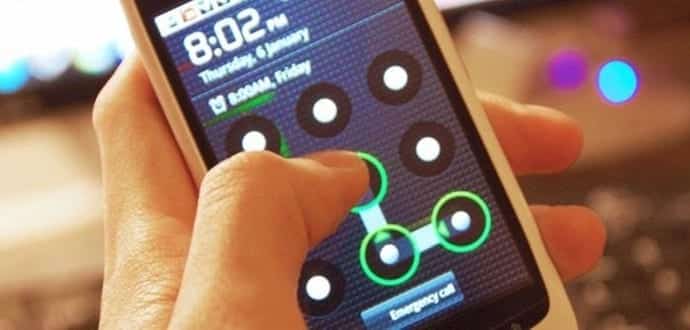Researchers Show That Android’s Popular Pattern Lock Security Can Be Cracked Within 5 Attempts
Currently, Android is the most used mobile OS in the world, which means that it used by millions of devices worldwide. While Android devices provides PIN codes or text passwords to keep your device secure, it also offers a Pattern Lock system that allows you to create a password to protect your smartphone using various patterns of your choice.
Apparently, around 40 percent of Android device owners prefer using popular screen pattern lock as compared to using PIN codes or text passwords. Pattern lock is a screen unlock tool that allows user to unlock their touchscreen based devices such as smartphone or tablet by drawing a specific pattern using the nine dots divided into a 3×3 grid without lifting the finger.
While one may think that having screen pattern lock is more secure than using PIN codes or text passwords, then you may have to think again. According to a new research from Lancaster University, Northwest University in China, and the University of Bath, it is really easy to crack 95% of screen pattern locks within five attempts before the device gets locked by using video and computer vision algorithm software. What is worse that the more complicated patterns out there are even easier to figure out than the more simple Pattern Locks.
“Pattern Lock is a very popular protection method for Android Devices,” said Dr Zheng Wang, principle investigator and co-author of the paper at Lancaster University.
“As well as for locking their devices, people tend to use complex patterns for important financial transactions such as online banking and shopping because they believe it is a secure system.
“However, our findings suggest that using Pattern Lock to protect sensitive information could actually be very risky.”
To prove their research, the researchers secretly video recorded 120 participants when they were drawing their Pattern Lock shape to unlock their smartphone in a public place.They then used the finger print algorithm quickly track the owner’s fingertip movements relative to the device’s position and within seconds the algorithm came up with possible patterns that could unlock the smartphone or tablet.
The results were able to get accurate from video recorded on a smartphone from up to two and a half metres away. It also works reliably with footage recorded on a digital SLR camera at distances up to nine metres away.
Finally, the study also refutes the notion that using a complex pattern with more complicated shape is more secure. In fact, the researchers found that the most complex patterns are the easiest to be cracked. They were able to successfully crack 87.5 percent of median complex patterns and 60 percent of simple patterns with the first attempt.
“Contrary to many people’s perception that more complex patterns give better protection, this attack actually makes more complex patterns easier to crack and so they may be more secure using shorter, simpler patterns,” Guixin Ye, the leading student author from Northwest University, stated.
The researchers suggest that using a shorter and simple pattern is much better than using a complicated one. Besides this, the researchers also suggest users to completely cover their fingers when drawing the pattern to unlock the device. They also believe that fluctuating screen color and brightness could potentially confuse the cameras used by hackers. Also, other security measures “such as entering a sentence using Swype-like methods” can be used.
Source: phys.org

